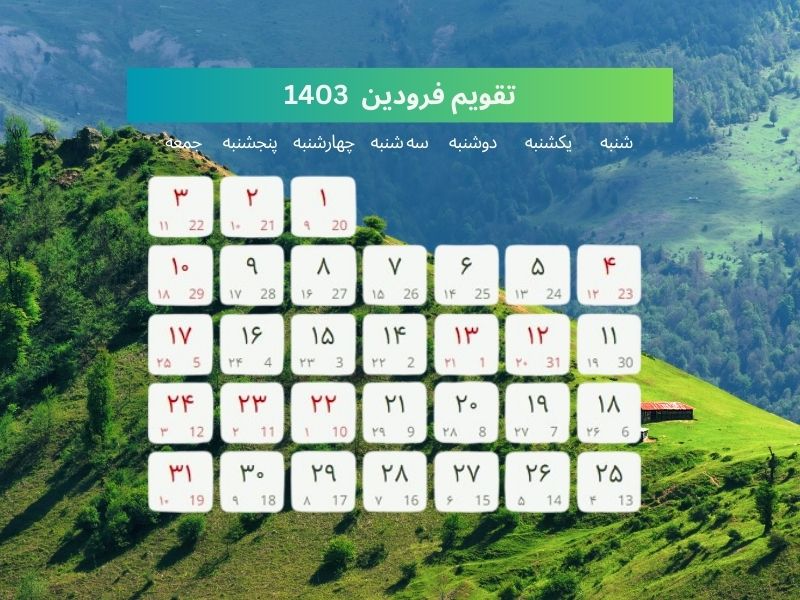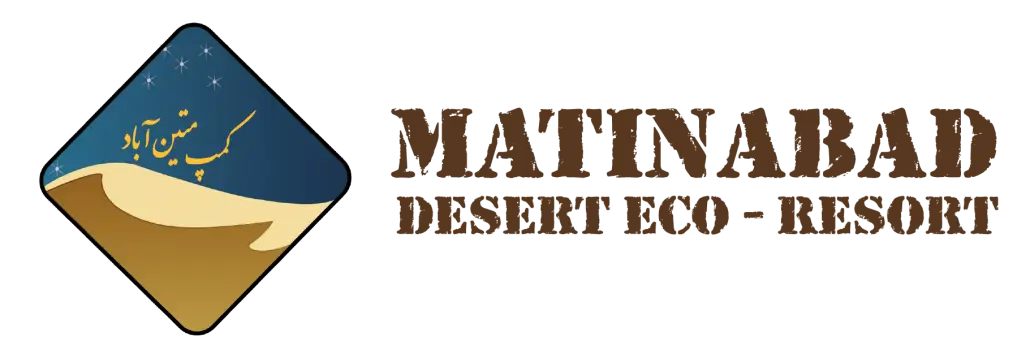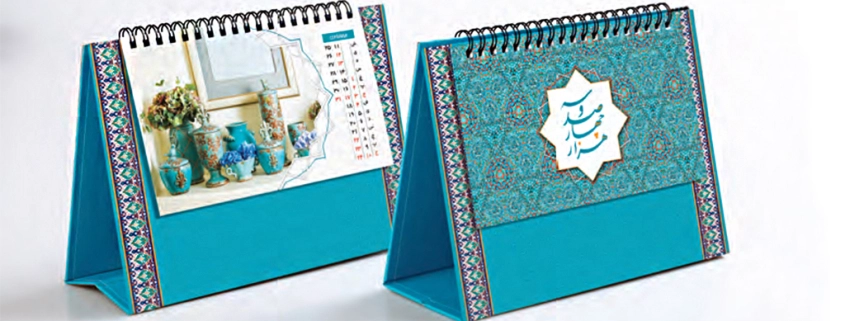Iranian Calendar (Solar Calendar); All You Need to Know About
Calendars are time measurement and organization systems that vary between cultures and areas of the world. While the Gregorian calendar is the most generally used today, numerous other calendars are now in use or were historically utilized in various regions of the world.
The Iranian calendar, for example, has a long history and cultural significance. The Iranian Calendar or Solar Calendar takes its origin in Ancient Persia and is connected with one of the oldest religions of the world, Zoroastrianism. Let’s learn more about the Iranian Calendar Today.
Iranian Calendar 2025
The Iranian calendar, sometimes referred to as the Persian calendar, is a solar calendar that is predominantly utilized by Persian-speaking cultures in Iran and surrounding countries. Its foundation is the tracking of the sun’s motion for Earth.
The Iranian calendar has seen numerous changes throughout history, with its origins in ancient Persian customs. The duration of the tropical year—the amount of time it takes for the Earth to complete one circuit around the sun—is taken into account by this precise calendar.
The months and weeks of the Iranian calendar are structured similarly to those of the Gregorian calendar, although the months have distinct names and different beginning points.
The vernal equinox, which often occurs on March 20 or 21 in the Gregorian calendar, marks the beginning of the Iranian year. This is called Nowruz, the Iranian New Year, and it heralds the arrival of spring.
Persian Calendar
There are twelve months in the Persian calendar, and their lengths vary. Depending on whether it’s a leap year or not, the last six months have either 30 or 29 days, while the first six months have 31 days.
Every four years or so, there is a leap year, which gives the calendar’s last month, Esfand, one extra day. A leap year is skipped if the astronomical computations indicate that it is not due.
Spring
Farvardin (March 21 – April 20)
Ordibehesht (April 21 – May 21)
Khordad (May 22 – June 21)
Summer
Tir (June 22 – July 22)
Mordad (July 23 – August 22)
Shahrivar (August 23 – September 22)

Fall
Mehr (September 23 – October 22)
Aban (October 23 – November 21)
Azar (November 22 – December 21)
Winter
Dey (December 22 – January 20)
Bahman (January 21 – February 19)
Esfand (February 20 – March 20/21)
Iranian Calendar History
The history of the Iranian calendar is lengthy and rich. It started with lunar-based systems in prehistoric Persia and changed as a result of Zoroastrianism. After the Arab conquest of Persia, the Sassanian Empire developed a solar-based calendar that eventually fused with the Islamic lunar calendar.
During the Seljuk and Mongol eras, the calendar was refined. The calendar framework was standardized and improved throughout the Safavid Empire period. After that, The Solar Hijri calendar was created in the early 20th century as a result of changes made to bring the Iranian calendar into line with the Gregorian calendar.
The Iranian calendar is still widely utilized in Iranian society today for civic, religious, and cultural reasons. It is a reflection of the nation’s past, customs, and relationship to the sun and seasons.
Iranian Calendar Converter
An Iranian calendar converter can be used to convert dates between the Iranian and Gregorian calendars. Tools or software that make it easier to convert dates between the two calendars are known as Iranian calendar converters.

The conversion of dates between the Iranian and Gregorian calendars can be done with a number of internet tools and software programs (like this one). Typically, these converters ask for the Iranian year, month, and day to be entered. They then output the equivalent date in the Gregorian calendar.
Iranian Calendar with Holidays
The Iranian calendar is significant in Iranian culture and religion in addition to being utilized as a civil calendar. Iranians, as well as many other communities, celebrate a significant holiday that marks the arrival of spring, Nowruz. Families join together to celebrate new beginnings, exchange gifts, and spend time together.
Yalda Night, also known as Shab-e Yalda or Shab-e Chelleh, is another ancient Iranian festival that celebrates the winter solstice, the longest night of the year. Persian-speaking people worldwide celebrate Yalda Night, and it does have enormous cultural and historical value in Iran in the Solar Calendar. Usually, the event happens on the evening of December 20th or 21st, according to the Gregorian calendar.
Interesting Facts about Solar Calendar
One of the earliest calendar systems is the Persian or Solar Calendar, which dates back to ancient Persia and has been in use for over 3000 years. Leap years are incorporated into this solar-based calendar so that it corresponds with the solar year.
The unusual month names, which are a reflection of Zoroastrian and Persian customs, have historical and cultural significance. For example, the first month of the year, Farvardin, is named after the Zoroastrian angel of the divine kingdom. The calendar is linked to the festival of Nowruz, the Persian New Year, and has cultural values for Iranians and Persian-speaking communities.

The accuracy of the Solar Calendar, attained by sophisticated astronomical computations, is well recognized. Other calendars in nearby areas have been influenced by the Persian calendar. For instance, the Afghan Calendar and the Tajik Calendar are based on the Persian Calendar system with some changes.
Persian Calendar sets aside particular days for religious festivities and observances, like Sizdah Bedar and Yalda Night. It captures the bond that exists between humans and the natural world. The calendar represents Iran’s rich history and enduring civilization and acts as a symbol of national identity and legacy.
Final Words
The Iranian calendar has cultural and religious importance in addition to being utilized as a civic calendar. Nowruz, or the Iranian New Year, is a major holiday that commemorates the start of spring and is celebrated by Iranians as well as many other cultures.
The Iranian calendar is a cultural emblem firmly established in the history and customs of Iran and Persian-speaking communities, as well as a practical instrument for measuring time. It represents the significance of agriculture, seasonal changes, and religious observances in the lives of those who adhere to it.
Are you planning to travel to Iran and looking for an Iran resort? Consider Matinabad Eco-resort.





Leave a Reply
Want to join the discussion?Feel free to contribute!